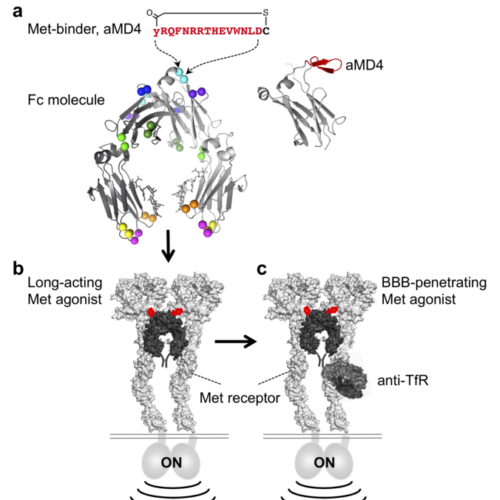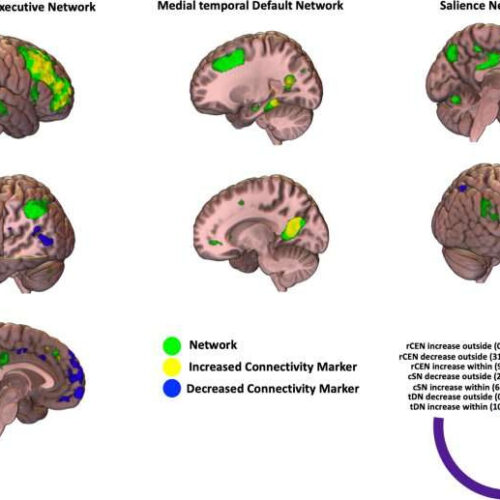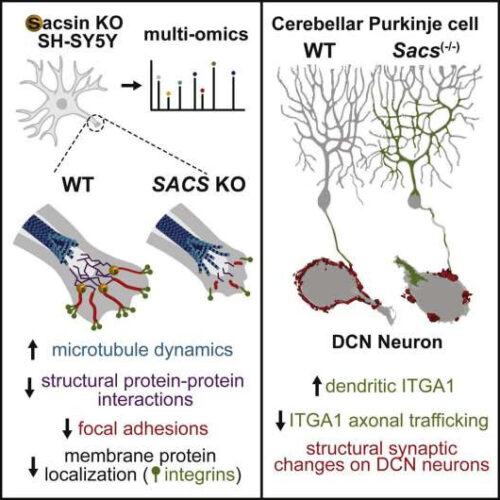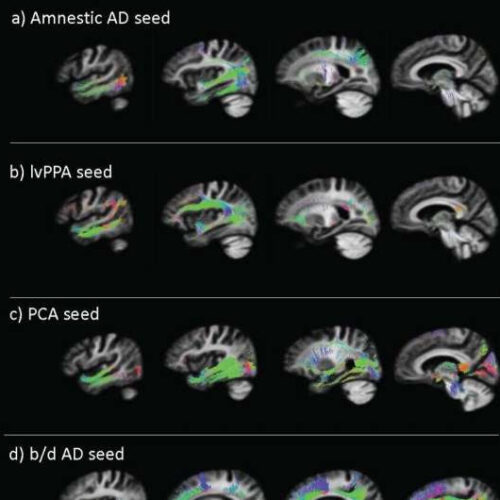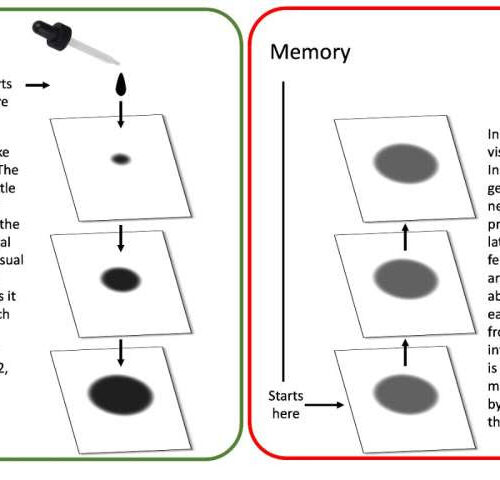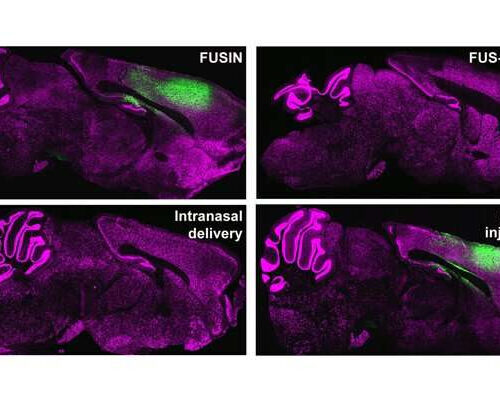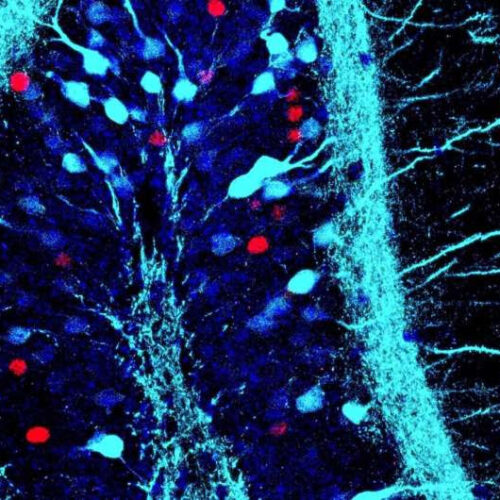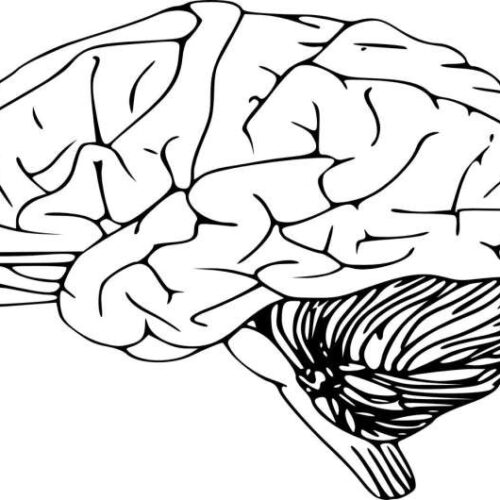KANAZAWA UNIVERSITY IMAGE: © 2022 SAKAI, ET AL. (A) A PHARMACOPHORE SEQUENCE OF MET RECEPTOR-BINDING MACROCYCLIC PEPTIDE (AMD4; SHOWN IN RED) WAS INSERTED INTO THE LOOPS (COLOURED BALLS) OF HUMAN IGG1 FC PROTEIN. (B) LASSO-GRAFTING FC YIELDS MET AGONISTS WITH EXTENDED HALF-LIFE IN THE BODY. (C) LASSO-GRAFTING FC OF AN ANTI-TFR ANTIBODY YIELDS MET AGONISTS...
Tag: <span>brain</span>
Investigators shed new light on brain activity related to dissociative symptoms
by McLean Hospital Triple network model of pathological dissociation. Credit: Neuropsychopharmacology (2022). DOI: 10.1038/s41386-022-01468-1 Trauma can cause dissociative symptoms—such as having an out-of-body experience, or feeling emotionally numb—that may help an individual cope in the short term but can have negative impacts if the symptoms persist for a long period of time. In a new study recently...
Scientists reveal role of key brain protein in childhood movement disorder
by University of North Carolina at Chapel Hill School of Medicine Graphical abstract. Credit: Cell Reports (2022). DOI: 10.1016/j.celrep.2022.111580 Scientists at the UNC School of Medicine and UNC Eshelman School of Pharmacy, in collaboration with a team from Queen Mary University of London, have illuminated the molecular events underlying an inherited movement and neurodegenerative disorder known as ARSACS—Autosomal...
What long-term opioid use does to your body and brain
by Rob Poole, The Conversation Opioids can cause severe constipation. Credit: Tomas Nevesely/Shutterstock In his new autobiography, Matthew Perry reveals that his colon burst as a result of his addiction to opioid painkillers. The 53-year-old actor, who played Chandler Bing in Friends, was in a coma for two weeks following the incident and had to wear a...
A telltale protein spreads throughout the brain in distinct patterns based on patients’ Alzheimer’s phenotype
by Delthia Ricks, Medical Xpress Identification of specific anatomical tracts using tau-PET seeds from each clinical group. Credit: J. Therriault, et al., Science Translational Medicine (2022) New imaging of patients with Alzheimer’s demonstrates how a telltale protein spreads throughout the brain based on the phenotype of the disease, i.e., whether the condition is dominated by forgetfulness, or...
New insights into how the brain separates perception from memory
by New York University How the brain works in the perception of an image varies significantly from how it recalls one from memory. This illustration captures how brain activity spreads in perception, akin to ink spreading on stacked pieces of paper, and memory, in which the activity is more constant across multiple brain maps. Credit: Jonathan...
A sound approach for effective gene therapy delivery to the brain
by Beth Miller, Washington University School of Medicine in St. Louis In new research, Hong Chen and her team developed an intranasally delivered gene therapy method that had comparable or better outcomes than existing methods while having minimal effect on the body’s other organs. Credit: Chen lab Researchers have been experimenting with different ways to...
Brain tricked into thinking it is fasting to cope better with inflammation
Mice who have been tricked into thinking they are fasting manage inflammation more easily, according to neurobiologists at The University of Manchester and collaborators from the University of Naples ‘Federico II, in Italy. The study of mice and published in Current Biology is also the first to show that the well-established protective effects of fasting...
Research team shines light on how the brain stores positive and negative memories
by Jessica Colarossi, Boston University It might be hard to believe, but this is a picture of a memory. In this image, the blue dots are positive memory cells, and the red dots are negative memory cells. Memories exist in the brain as networks of cells called engrams, and are stored and processed all over...
Rapid delivery: Injected protein flips a switch in the brain, disappears
by Olga Kuchment, Texas A&M University Credit: Pixabay/CC0 Public Domain Many diseases have at their origin a protein that does not function properly. Now, a multidisciplinary research team with Texas A&M AgriLife and Texas A&M University has found a way to deliver a protein quickly, effectively and briefly to the brain, with therapeutic and scientific implications....

